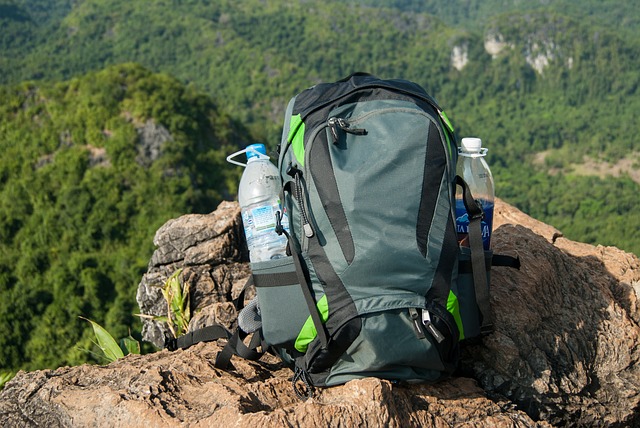Backpacking is a popular outdoor activity that requires you to carry all your essentials with you, including water. Proper hydration is essential to ensure your body functions optimally during a backpacking trip. Dehydration can lead to fatigue, dizziness, and even serious medical conditions. Therefore, it’s important to choose the right water-carrying container to stay hydrated throughout your trip. In this post, I’ll discuss the best ways to carry water while backpacking and provide you with expert tips to make the most of your water-carrying system.
Types of Water Carrying Containers
When it comes to carrying water while backpacking, there are three primary options: water bottles, water bladders, and water filter systems.
Water Bottles
Water bottles are the most common and simple option for carrying water while backpacking. They come in a variety of shapes and sizes, from lightweight plastic to more durable stainless steel.
- Advantages: Water bottles are easy to use, durable, and readily available. They are also affordable and can be purchased at most outdoor gear stores.
- Disadvantages: They have a limited capacity and can be heavy when filled with water. Additionally, you may need to stop and unscrew the lid to take a drink, which can be inconvenient.
- Best types of water bottles for backpacking: Consider lightweight, BPA-free plastic bottles with a capacity of at least 32 ounces. Stainless steel bottles are also a great option for durability and insulation.
Water Bladders
Water bladders, also known as hydration bladders or reservoirs, are another popular option for carrying water while backpacking. They consist of a flexible water storage bag that can be placed inside a backpack and connected to a tube with a bite valve for easy drinking.
- Advantages: Water bladders are convenient for on-the-go hydration as you can drink without stopping or removing your backpack. They also offer a larger capacity than water bottles.
- Disadvantages: Water bladders can be harder to clean and dry than water bottles. They can also be heavy and cumbersome, especially if not properly secured within your backpack.
- Best types of water bladders for backpacking: Consider a bladder with a capacity of at least 2 liters, and one that is made with durable and easy-to-clean materials.
Water Filter Systems
Water filter systems are ideal for backpackers who plan to refill their water containers from natural water sources, such as rivers and streams. These systems filter out impurities and contaminants from the water, making it safe to drink.
- Advantages: Water filter systems provide an almost unlimited supply of clean water, eliminating the need to carry large quantities of water.
- Disadvantages: Water filter systems can be expensive and require maintenance, such as regular filter replacements. They can also be time-consuming to use.
- Best types of water filter systems for backpacking: Consider lightweight and compact filter systems that are easy to use and provide fast filtration. Look for systems that are certified to remove harmful bacteria, viruses, and protozoa.
Factors to Consider When Choosing a Water-Carrying Container
When choosing a water-carrying container for backpacking, there are several factors to consider to ensure you have the right container for your needs.
- Durability: Durability is an essential factor to consider when choosing a water-carrying container. It’s important to choose a container that can withstand rough handling, extreme temperatures, and outdoor elements.
- Weight: Weight is another crucial factor to consider when selecting a water-carrying container. It’s essential to balance the weight of the container with the amount of water you need to carry, as heavy water containers can add a significant amount of weight to your backpack.
- Capacity: The capacity of your water-carrying container will depend on your water needs and the length of your backpacking trip. It’s essential to choose a container with enough capacity to provide you with adequate hydration throughout your trip.
- Ease of Use: Ease of use is another important factor to consider when choosing a water-carrying container. You want a container that is easy to fill, carry, and drink from. Consider features such as a wide mouth opening, an ergonomic design, and a drinking tube with a bite valve.
- Compatibility with Backpack: It’s essential to choose a water-carrying container that is compatible with your backpack. Consider the size and shape of your backpack and choose a container that fits well and is easy to access.
Discover the perfect average backpacking weight and pack smart for your next adventure!
Tips for Carrying Water While Backpacking
Carrying water while backpacking can be challenging, but there are several tips you can follow to ensure you have enough water to stay hydrated throughout your trip.
- How much water to carry: The amount of water you should carry depends on your water needs and the length of your trip. A general rule of thumb is to carry at least 2 liters of water per person per day, but you may need to carry more if you are hiking in a hot or dry climate.
- Where to fill up on water: Identify water sources along your hiking route and plan your water refills accordingly. Natural sources such as rivers and streams can be an excellent sources of water, but it’s essential to filter or treat the water before drinking.
- How to clean water containers: Regularly clean your water containers to prevent bacteria growth and to maintain the taste and quality of the water. Use mild soap and warm water to clean your containers and let them air dry.
- How to pack water containers: Pack your water containers strategically to distribute weight evenly in your backpack. Consider using a hydration sleeve or compartment to keep your water bladder secure and prevent it from moving around in your pack. For water bottles, use the side pockets of your backpack for easy access.
- Monitor your water intake: It’s essential to monitor your water intake and refill your containers regularly. Don’t wait until you’re thirsty to drink, as thirst is a sign of dehydration. Take frequent sips of water throughout your hike to stay hydrated.
Conclusion
Carrying water while backpacking is essential for maintaining proper hydration and ensuring a safe and enjoyable trip. Whether you choose water bottles, water bladders, or water filter systems, it’s important to consider factors such as durability, weight, capacity, ease of use, and compatibility with your backpack.
Remember to also follow tips such as monitoring your water intake, planning your water refills, cleaning your water containers, and packing them strategically. By following these guidelines, you’ll have a reliable water-carrying system that will help keep you hydrated and energized on your backpacking adventure.










